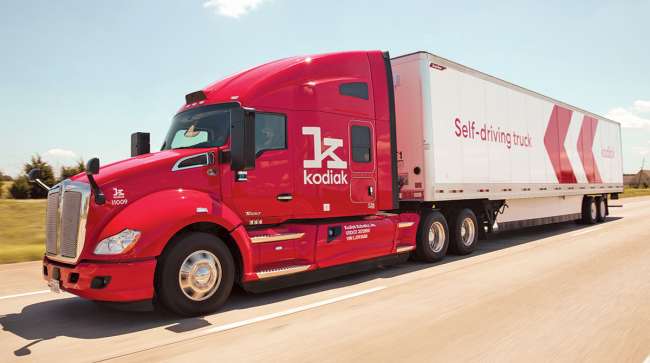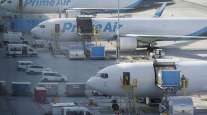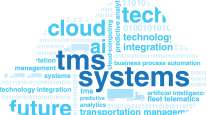Senior Reporter
ATA Presses Congress for AV Policy Directives

[Stay on top of transportation news: Get TTNews in your inbox.]
WASHINGTON — Setting standards for a framework on autonomous vehicle technologies in trucking is a policy priority American Trucking Associations called on federal transportation lawmakers to pursue.
As members of the congressional transportation committees explore legislative updates to improve highway safety, ATA renewed its calls for the adoption of such a nationwide framework.
In a recent letter to the leadership of the U.S. House Transportation and Infrastructure Committee, ATA Executive Vice President of Advocacy Bill Sullivan said: “We strongly recommend that any legislation establishing federal oversight of the development and deployment of [autonomous vehicles] technologies consider all road users, including passenger vehicles, commercial trucks, buses, as well as the supporting infrastructure.”

Sullivan
Specifically, ATA proposed the federal apparatus lead the way in setting policy design to assist with the deployment of AV technologies in trucking. Also, the federal government’s approach to regulating should adhere to industry best practices, and regulators should collaborate with industry to establish performance-based standards. Such standards must be centered on testing and evaluation criteria for autonomous vehicles.
ATA recently shared a similar AV policy outline with the U.S. Department of Transportation.
“Requiring AVs to achieve an acceptable level of safety and performance, rather than requiring the use of specific technology, will focus regulations on risk management within specific operating environments,” Sullivan indicated, pointing to government-industry collaborations that give DOT access to relevant information on the technology.
“This information will help DOT and other agencies develop policies, regulations, and/or guidance without inadvertently picking technological or operational winners or losers,” Sullivan added.
ATA Letter to House Committee on Autonomous Technology by Transport Topics on Scribd
Stakeholders continue to press regulators for additional guidance on autonomous vehicles. Proponents of the technology argue autonomous vehicles have the potential to alleviate safety concerns on the nation’s highways.
After years of not advancing comprehensive legislation on AV technology, transportation leaders are demonstrating renewed interest in establishing regulations in this policy space. They argue safety benefits and the technology’s ability to respond to market needs are worth pursuing.
At a hearing Feb. 2, Rep. Peter DeFazio (D-Ore.), chairman of the Transportation and Infrastructure Committee, emphasized the potential safety and commercial benefits associated with the technology as well as the role of the workforce.
“As regulators work to hold automated trucks and buses to the highest safety standards,” he said, “they must rely on the expertise of the men and women who operate these vehicles today. Professional commercial drivers have a deep well of knowledge on operating conditions on our roads and must be part of the safe transition to advanced technologies.”
Professional commercial drivers have a deep well of knowledge on operating conditions on our roads.
Peter DeFazio (D-Ore.), chairman of the House Transportation and Infrastructure Committee
Del. Eleanor Holmes Norton (D-D.C.), chairwoman of the Highways and Transit Subcommittee, said, “Nationwide, we are experiencing a startling rise in fatalities among drivers and other road users. AVs have the potential to drastically reduce deaths on our roadways by reducing traffic crashes caused by human behavior. Still, safety benefits must be carefully weighed against risk, especially when deploying commercial and passenger-carrying AVs.”
She continued, “To maximize the road safety impact of AVs, we must ensure that these technologies are held to the highest possible safety standards. Such standards must consider the safety of all road users who interact with AVs, including pedestrians and cyclists and those who scoot and use wheelchairs, which is especially critical in urban areas like the District of Columbia.”
Want more news? Listen to today's daily briefing above or go here for more info
In recent years, Sens. John Thune (R-S.D.) and Gary Peters (D-Mich.), members of the committee on trucking policy, have come up short in their effort to clear a self-driving vehicle bill. In the House, Rep. Bob Latta (R-Ohio), a member of the Energy and Commerce Committee, reintroduced legislation centered on establishing a national policy framework.
Specifically, the Safely Ensuring Lives Future Deployment and Research in Vehicle Evolution (SELF DRIVE) Act, would seek to assist agencies and industries deploying autonomous vehicles around the country.
“We have to have a national framework so we have to have pre-emption because we can’t have 50 states and the District of Columbia doing their own thing,” Latta told Transport Topics on Feb. 2. “This technology is advancing and it should be something we want to embrace. But we need to get the federal framework in there.”




